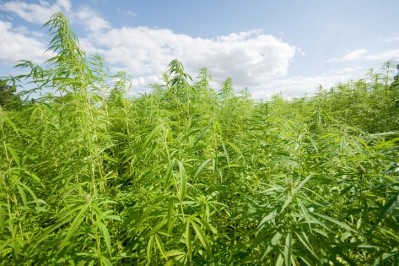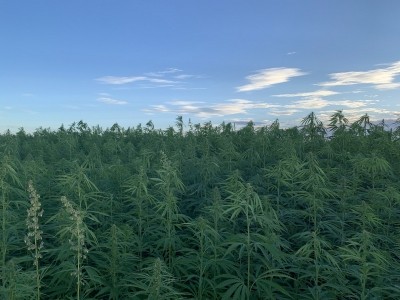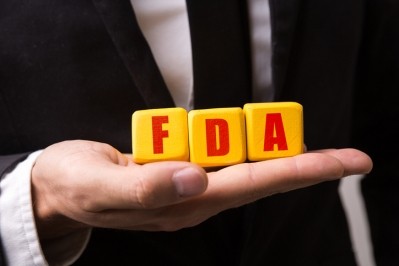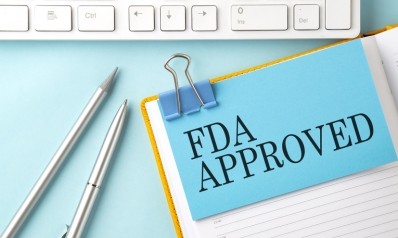Collaboration needed to ensure hemp approved as feed ingredient in the US

The Association of American Feed Control Officials (AAFCO) and National Industrial Hemp Council of America (NIHC) co-hosted the webinar on August 9.
The focus of the broadcast was on how to overcome challenges and gain approval for hemp seed and hempseed by-products as ingredients in animal feed.
Hollis Glenn, member of AAFCO’s Board of Directors and deputy commissioner of operations for the Colorado Department of Agriculture, said: “This topic has been on everyone’s radar for years. More than ever, it was the right time to stimulate an important industry conversation that brings us all closer to reaching a common goal - and to collaborate on safe solutions.”
The webinar was aimed at pet food, animal feed and hemp industries, and regulatory officials, discussing peer-to-peer questions, challenges, solutions, and best practices to address why hemp is not yet used in animal feed in the US.
Interest in the use of hemp in commercial animal feed in the US has accelerated since the passage of the 2018 Farm Bill. While that legislation expanded the legal production of hemp in the US, the use of hemp in animal feed remains under the jurisdiction of the US Food and Drug Administration (FDA) and state regulatory programs for feed.
In early 2022, AAFCO and 17 industry and regulatory organizations issued a joint open letter to state agriculture leadership, calling on them to support greater education and scientific research to ensure the safety of hemp in feed. NIHC subsequently issued a letter inviting AAFCO and industry to collaborate to ensure registration for hemp-derived feed ingredients.
“By co-collaborating with AAFCO, we were able to address a path forward for the hemp and animal-feed industries - working together to identify ways to decrease barriers and speed up approvals. The webinar provided the clarification we all have been craving,” said Hunter Buffington, member of NIHC’s Government Affairs Committee and vice president of policy and advocacy for element6 Dynamics. “With a shared goal, we will soon achieve the regulatory oversight and approval of new feed ingredients for the agriculture, livestock and hemp industries.”
The hemp-in-feed webinar was divided into three parts to address priority topics: 1) Scientific Research and Data; 2) Ingredient Review and Approval; and 3) General Interest and Concerns. A total of 18 topic-specific, industry experts led discussion, with each section involving a 50-minute panel exchange and 15-minute Q&A.
Key takeaways
The participants focused on hemp as a feed ingredient rather than its potential as a supplement or medicated feed. Hemp used for human and animal nutrition comes from the oil seed and its by-products. The FDA has recognized hempseed: oil, hearts, and protein powder as Generally Recognized as Safe (GRAS) for human consumption, which provided the basis for the panel’s conversation.
Collaboration is seen as the way forward. “Multi-industry leaders, from hemp and animal feed producers to researchers, government regulators and policy makers, agree that it is important to collaborate and coordinate on safe solutions and best practices – all from the same position.”
Another takeaway from the event was that national discussions, forums and multi-industry collaboration will help move the approval process forward with new ideas, procedures, and solutions, according to the organizers.
“Finding out what other people are doing and needing across industries – and then collaborating – will help all industries understand the challenges and opportunities.”
Research is vital, agreed the participants. “It is imperative that, to meet regulations, the nutritional profile of hemp and its effects on the nutrition of animal by-products (e.g., eggs, beef) be well-researched and precise. The regulatory process can be long, but it is critical to work through the research.”
Safety data
Understanding safety data will establish specification for hemp as an ingredient, with analytical methods that are accurate and validated, they added.
“People and animals consume and metabolize foods differently; so hemp for humans is different than it is for livestock and pets. It’s important to establish safety and utility in target animals and pets first, then to ensure the safety of meat, milk and eggs that are marketed for human consumption.”
The acceptance and availability of peer-reviewed safety and utility data for animal feed for different species of animals; the lack of universally accepted standard testing methods for hemp ingredients for inclusion in feed; and a need for additional information about the long-term effects on animal welfare and the safety of the human food supply are some of the hurdles that still need to be addressed.
“Unified standards that align with the regulatory laboratories charged with feed safety will help our animals and our industry; and ensure animal and human safety by validated methods to test hemp grain for contamination.”








